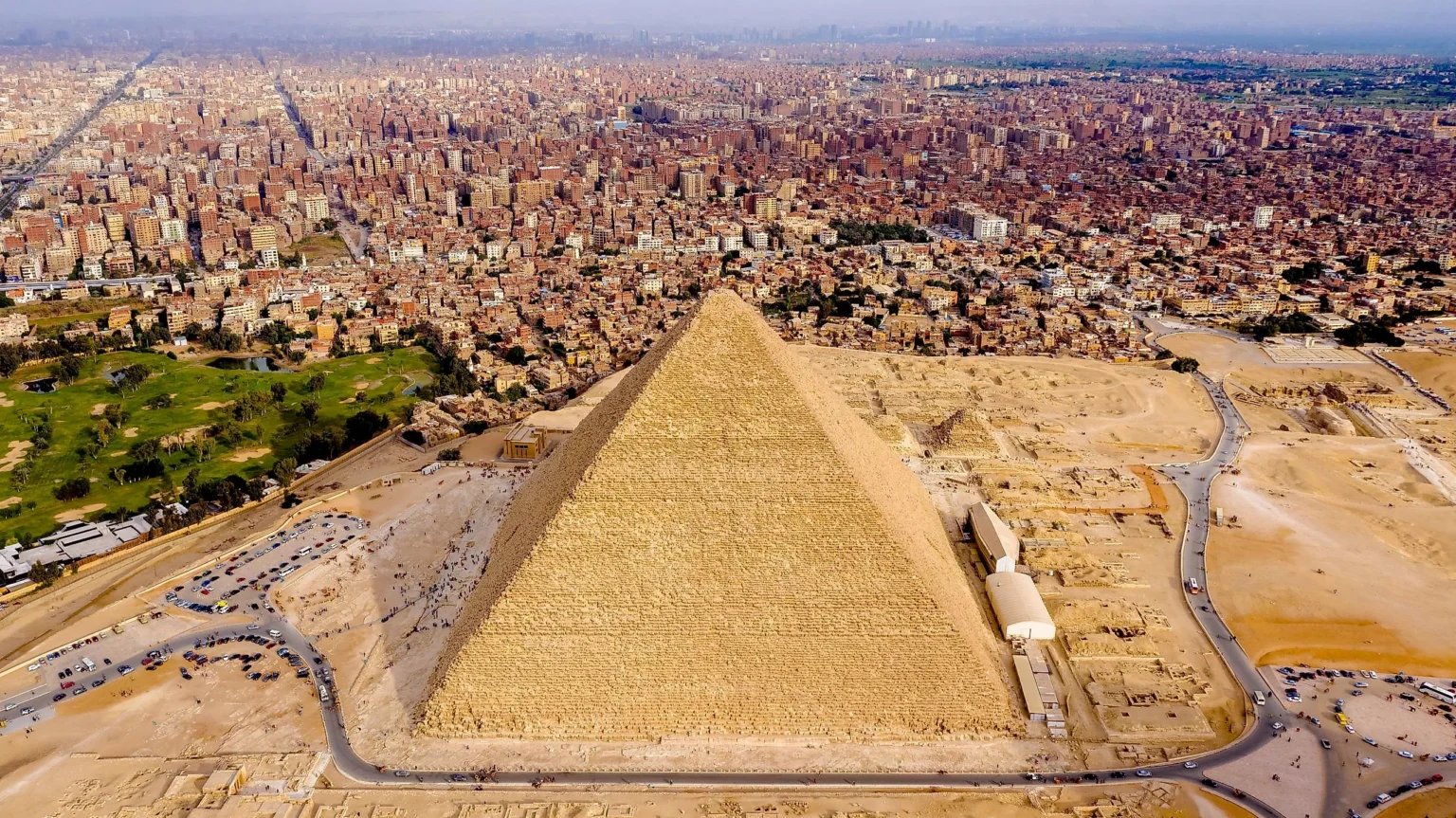At a Glance
- Giza’s pyramids showcase Egypt’s engineering skill and a landscape shaped by ritual meaning.
- New imaging tools reveal hidden chambers and deepen research into the pyramids’ design.
- Conservation efforts aim to balance tourism growth with protection of fragile structures.
The Pyramids of Giza stand as Egypt’s most enduring landmark and one of the most remarkable achievements in human history.
Rising above the western edge of the Nile Valley, the pyramids of Khufu, Khafre and Menkaure form a landscape that has defined how the world understands Ancient Egypt for centuries.
Built more than 4,500 years ago, they continue to anchor research into engineering, ritual and political power while attracting millions who want to see their scale and mystery firsthand.

A legacy built in stone
The Great Pyramid of Khufu, originally about 146.6 meters tall, held the title of the world’s tallest structure for nearly 3,800 years.
Together, the three pyramids and their surrounding temples remain the best-preserved members of the ancient Seven Wonders.
Far more than tombs, they were designed to project authority, reinforce spiritual beliefs and display the state’s ability to organize labor and resources.
A landscape that shaped their meaning
Giza’s power lies not only in the pyramids themselves but in where they stand. The limestone plateau provided both material and elevation, giving the structures a commanding position over the Nile floodplain.
Seen from afar, the pyramids rise like anchors on the horizon; up close, their causeways and aligned temples reveal a carefully planned environment that connected life, death and belief. Positioned between Memphis and the desert, the site acted as a ceremonial boundary between the living world and the afterlife.

How they were built — and who built them
Excavations around Giza have changed earlier assumptions about the workforce. Evidence now shows the builders were teams of skilled laborers, craftsmen and seasonal workers supported by bakeries, workshops and medical facilities.
Their coordination remains a feat of planning: the base of the Great Pyramid is nearly perfectly level, and many casing stones fit so precisely that their joints remain almost invisible.
Inside the Pyramids: Chambers and unanswered questions
Behind the massive exterior lies a network of corridors and rooms still debated by researchers. The Grand Gallery and the King’s and Queen’s Chambers reveal technical innovation and symbolic meaning.
Modern scanning technologies, including cosmic-ray muon imaging, uncovered a large void above the Grand Gallery in 2017, adding new layers to the study of their design. Its purpose remains unknown.
Protecting the plateau in a modern world
Giza has been part of the UNESCO World Heritage Site “Memphis and its Necropolis” since 1979, placing it under continual conservation review.
Preservation now occurs alongside the pressures of Cairo’s growth and millions of visitors each year. Recent projects include stabilizing exposed stone, improving access routes and coordinating interpretation with the nearby Grand Egyptian Museum.
Tourism and a new era of storytelling
Tourism at Giza is shifting as Egypt opens the Grand Egyptian Museum, designed to ease pressure on vulnerable structures by offering a modern hub for the country’s artifacts. Officials aim to improve visitor flow and promote sustainable growth as the number of tourists rises.
Why Giza still matters
The Pyramids of Giza endure because they embody more than ancient engineering. They remain a focal point of identity, curiosity and scientific study.
Their scale, precision and symbolism continue to shape how societies understand power, belief and the passage of time. They are reminders that history is not just preserved, it is lived with and passed on.






